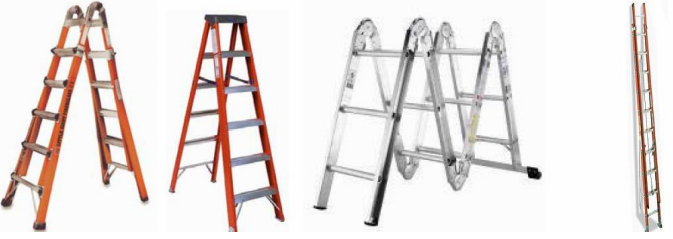LADDER SAFETY: INSPECTING LADDERS
Inspect ladders carefully. All ladders must be inspected periodically by a competent person, and after any occurrence that could affect their safe use. Including dropping the ladder or if it falls.
Inspect ladders before each use, any defective and/or damaged ladders must either be immediately marked in a manner that readily identifies them as defective/damaged, or be tagged with a “Do Not Use” tag or similar language. Defective and/or damaged ladders must not be used and must be removed from service until repaired.
 Look for warning signs. Check all ladder components for signs of wear, corrosion and structural failure before each use. These inspections should include:
Look for warning signs. Check all ladder components for signs of wear, corrosion and structural failure before each use. These inspections should include:
- Rungs: Check for broken split, cracked, corroded or missing rungs.
- Side rails: Check for broken, split, cracked, corroded or missing side rails.
- Cracks: Check carefully for cracks; they are hard to see. Cracks weaken ladders.
- Excessive bends: Check for rungs or side rails with excessive bends. Bent areas are greatly weakened and may fail during use.
- Hardware: Check for ladders with loose, corroded, or weakened fasteners and hardware. Feet – Check ladders for missing or damaged feet. Ladder feet may have both non-skid pads for use on hard surfaces (concrete), and metal feet for soft surfaces (dirt).
- Coatings or paint: Check for paint or other coating hiding defects. Wood ladders shall not be painted or coated with any opaque covering, except for identification or warning labels which may be placed on one face only of a side rail. When other types of ladders are painted it is very hard for the user to observe defects/damage such as cracks or dents and painted areas must be inspected carefully for hidden damage.
- Oil, grease and other slipping hazards: Inspect ladders for oil, grease, moisture or other slippery materials before use and clean as necessary.
- Capacity: Check the capacity label and make sure the ladder has sufficient capacity to hold you and everything you are wearing/carrying

